1. Turning Points
1.1. The war in the Pacific turned against Japan during the Battle of Midway (June 3–6, 1942), an American victory that destroyed the Japanese first-line carrier force and, together with the Battle of Guadalcanal, ended Japan’s ability to prosecute an offensive war.
1.2. The tide of the war in Europe shifted with the Soviet victory at the Battle of Stalingrad (February 1943). More than one million Soviet troops and tens of thousands of civilians died in the defense of the city, but the destruction of two entire German armies marked the beginning of the end of the Third Reich.
2. The End of WW II
2.1. The Allied landings at Normandy on June 6, 1944, opened a second front in Europe, and Germany’s abortive offensive at the Ardennes in the winter of 1944–45 marked the Third Reich’s final push in the west.
2.2. The Red Army advanced from the east and effectively claimed all the territory under its control for the Soviet sphere.
2.3. The Allied armies converged on Berlin. Hitler committed suicide on April 30, 1945, and the war in Europe ended on May 8.
2.4. The American “island hopping” campaign had destroyed key Japanese installations throughout the Pacific while allowing bypassed islands to wither on the vine.
2.4.1. Hundreds of thousands were killed in firebombings of Japanese cities, and the atomic bombing of Hiroshima and Nagasaki in August 1945 knocked Japan out of the war.
3. Timeline
3.1. Leading up to the War
3.1.1. 1933 January 30
3.1.1.1. Adolf Hitler becomes Chancellor of Germany. His Nazi Party, or the Third Reich, takes power and Hitler is essentially the dictator of Germany.
3.1.2. 1936 October 25
3.1.2.1. Nazi Germany and Fascist Italy form the Rome-Berlin Axis treaty.
3.1.3. 1936 November 25
3.1.3.1. Nazi Germany and Imperial Japan sign the Anti-Comintern Pact. This was a pact against communism and Russia.
3.1.4. 1937 July 7
3.1.4.1. Japan invades China.
3.1.5. 1938 March 12
3.1.5.1. Hitler annexes the country of Austria into Germany. This is also called the Anschluss.
3.2. World War II
3.2.1. 1939 September 1
3.2.1.1. Germany invades Poland. World War II begins.
3.2.2. 1939 September 3
3.2.2.1. France and Great Britain declare war on Germany.
3.2.3. 1940 April 9 to June 9
3.2.3.1. Germany invades and takes control of Denmark and Norway.
3.2.4. 1940 May 10 to June 22
3.2.4.1. Germany uses quick strikes called blitzkrieg, meaning lightning war, to take over much of western Europe including the Netherlands, Belgium, and northern France.
3.2.5. 1940 May 30
3.2.5.1. Winston Churchill becomes leader of the British government.
3.2.6. 1940 June 10
3.2.6.1. Italy enters the war as a member of the Axis powers.
3.2.7. 1940 July 10
3.2.7.1. Germany launches an air attack on Great Britain. These attacks last until the end of October and are known as the Battle of Britain.
3.2.8. 1940 September 22
3.2.8.1. Germany, Italy, and Japan sign the Tripartite Pact creating the Axis Alliance.
3.2.9. 1941 June 22
3.2.9.1. Germany and the Axis Powers attack Russia with a huge force of over four million troops.
3.2.10. 1941 December 7
3.2.10.1. The Japanese attack the US Navy in Pearl Harbor. The next day the US enters World War II on the side of the Allies.
3.2.11. 1942 June 4
3.2.11.1. The US Navy defeats the Japanese navy at the Battle of Midway.
3.2.12. 1942 July 10
3.2.12.1. The Allies invade and take the island of Sicily.
3.2.13. 1943 September 3
3.2.13.1. Italy surrenders to the Allies, however Germany helps Mussolini to escape and set up a government in Northern Italy.
3.2.14. 1944 June 6
3.2.14.1. D-day and the Normandy invasion. Allied forces invade France and push back the Germans.
3.2.15. 1944 August 25
3.2.15.1. Paris is liberated from German control.
3.2.16. 1944 December 16
3.2.16.1. The Germans launch a large attack in the Battle of the Bulge. They lose to the Allies sealing the fate of the German army.
3.2.17. 1945 February 19
3.2.17.1. US Marines invade the island of Iwo Jima. After a fierce battle they capture the island.
3.2.18. 1945 April 12
3.2.18.1. US President Franklin Roosevelt dies. He is succeeded by President Harry Truman.
3.2.19. 1945 March 22
3.2.19.1. The US Third Army under General Patton crosses the Rhine River.
3.2.20. 1945 April 30
3.2.20.1. Adolf Hitler commits suicide as he knows Germany has lost the war.
3.2.21. 1945 May 7
3.2.21.1. Germany surrenders to the Allies.
3.2.22. 1945 August 6
3.2.22.1. The United States drops the Atomic Bomb on Hiroshima, Japan. The city is devastated.
3.2.23. 1945 August 9
3.2.23.1. Another atomic bomb is dropped on Nagasaki, Japan.
3.2.24. 1945 September 2
3.2.24.1. Japan surrenders to US General Douglass MacArthur and the Allies.
4. Casualties in WWII
4.1. The most destructive war in all of history, its exact cost in human lives is unknown, but casualties in World War II may have totaled over 60 million service personnel and civilians killed.
4.2. Nations suffering the highest losses, military and civilian, in descending order, are:
4.2.1. USSR: 42,000,000
4.2.2. Germany: 9,000,000
4.2.3. China: 4,000,000
4.2.4. Japan: 3,000,000
5. Facts
5.1. Dates
5.1.1. September 1, 1939 – September 2, 1945
5.2. Location
5.2.1. Europe, Pacific, Atlantic, South-East Asia, China, Middle East, Mediterranean and Northern Africa
5.3. Commanders
5.3.1. Allies:
5.3.1.1. Chiang Kai-shek Charles de Gaulle
5.3.1.2. Joseph Stalin (Soviet Union)
5.3.1.3. Franklin D. Roosevelt (USA)
5.3.1.4. Winston Churchill (Britain)
5.3.1.5. Chiang Kai-shek (China)
5.3.2. Axis:
5.3.2.1. Adolf Hitler (Germany)
5.3.2.2. Hirohito (Japan)
5.3.2.3. Benito Mussolini (Italy)
5.4. Outcome
5.4.1. Allied Victory
5.5. Results
5.5.1. - End of German Third Reich - United States and Russia become global superpowers - Founding of the United Nations
